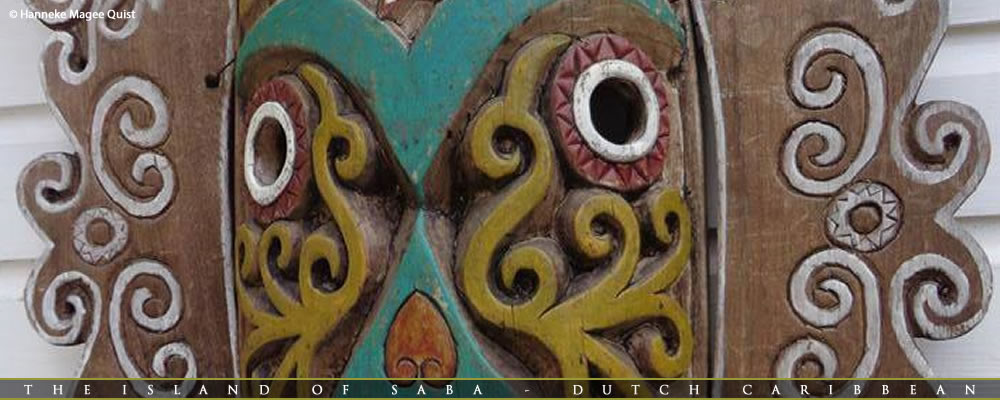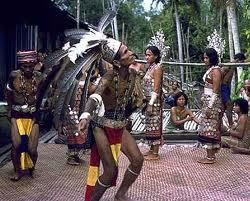 |

|
The Iban Room Your room is designed on the culture and craftsmanship of the Iban tribe that live in Sarawak, Malaysia. They are notorious for being ‘headhunters’. During hunting and warfare practices they decapitate their prey or enemy as a sign of status and power. The Iban believe that if they hang the skulls of their enemies in their longhouse they will obtain the power, strength and intelligence of that individual. Since the 1960’s the Malaysian government has banned the decapitation of humans and the practice has since died. However the decapitation of animals is still practiced. Especially during their annual feast day called ‘Gawai’ where the Iban hang monkey heads in their longhouse to respect the dead and fight off unwanted spirits.  The Iban tribe live in the Sarawak province on the island of Borneo and live in the jungle along the many rivers that flow through the rainforest. Since the 1990’s the population of the Iban has started to decrease due to the rapid growth of the Malaysian economy. Many of the young Ibans are moving towards the cities to start careers and families there. However, the Ibans that do leave the longhouse often come back to visit for holidays like Malaysian Independence Day, Iban weddings or funerals and the Iban festival ‘Gawai’. While you stay here at SeleraDunia we hope that your room can help you understand these true jungle people. The Iban tribe live in the Sarawak province on the island of Borneo and live in the jungle along the many rivers that flow through the rainforest. Since the 1990’s the population of the Iban has started to decrease due to the rapid growth of the Malaysian economy. Many of the young Ibans are moving towards the cities to start careers and families there. However, the Ibans that do leave the longhouse often come back to visit for holidays like Malaysian Independence Day, Iban weddings or funerals and the Iban festival ‘Gawai’. While you stay here at SeleraDunia we hope that your room can help you understand these true jungle people.Alcohol, food and life The Iban live in longhouses along the many rivers of Borneo. Here their communities have thrived for generations. The river is a key lifeline for the Iban as they wash, bath and swim in it, whilst also fishing it for food. Additionally, the water from the river is used to water their crops and feed their animals. Much of the day is spent on the banks of the rivers and it is a social meeting point for the women of the longhouse as they wash the clothes and bath themselves. Many of the children of the longhouse grow up on these same banks and enjoy swimming, wrestling and jumping into the river as pastimes. The river is also the main mode of transport for the Iban and has been so for decades. Their boats are made of one single tree trunk and are used to transport goods and people up and down the many winding rivers of Borneo. Since it is Malaysian law that all Malaysians have an education, special Iban schools have been set-up along the rivers of Borneo to accommodate the Iban children. Iban boats will be seen going up and down rivers in the early part of the day as young Iban children are brought to schools. Iban cuisine is quite unique as it consists of animals and vegetables that most humans will never consume. They scout the forest for anything that moves and they can consume. Snakes, monkeys, frogs, wild boar, deer and crocodile are often on the menu. The vegetables they grow are more common, such as rice, cabbage, corn, fern and carrots. However a domestic vegetable called ‘Kangkung’ is also widely harvested. Iban dining takes place on the floor of the longhouse where long rattan matts are rolled out and the food and drink are placed on. People then take their place around the matt and eat using their hands. The elderly or guests are first to enjoy the meal before the rest of the longhouse is allowed to eat. At dinner and for most of the day the Iban drink a local drink. This again is known and made only in the jungles of Borneo. This potent drink made from fermented rice wine is called ‘Tuak’. Tuak is a very potent drink and has a very strong taste and smell! During Gawai the Iban drink this from sunrise to sunset. Every longhouse has it’s own custom during Gawai and here is our experience. “In the hot afternoon sun the Iban slaughtered a wild boar so that the elder of the longhouse can read the boars liver. Yes, read the boar’s liver! It is believed that the liver will forecast the prospects for harvest, happiness, health, births and much more in the longhouse for the coming year. Since it was an important part of the Gawai celebration everyone in the longhouse is present. The wild boar is killed in an array of squeals that could make you go deaf. The liver is cut out and handed to the elder. The elder places the liver on a silver plate and starts to read it. After a while it was revealed that the longhouse would have a hard year ahead. Immediately heads turned toward the tourists present. Their eyes piercing, minds racing. Another wild boar was called up and killed. The same ritual as before and the elder started to read. Thankfully this liver read that the longhouse would have a successful and bountiful year! As the night started to approach the elders and spiritual leaders, as well as the leader of the longhouse started a chant around a fire. Monkey skulls hang from the ceiling directly above the fire. The leaders and elders chanted the same saying and stamped their feet around this growing fire. Tuak was consumed at an alarming rate and before long the chanters were intoxicated and in a trance. After hours of chanting, smoking and drinking the sun started to rise for morning and the first day of the new Iban year. The elders and leaders had fought off evil spirits the whole night and had asked the spirits of their ancestors to guard and watch over the longhouse for the coming year. The first day of the new Iban year could begin.” Hunting The Iban hunt using blowpipes and poisonous darts that paralyzes or kills their prey. They use two different types of poisons when hunting. One that paralyzes their prey and is mostly used on the large animals such as deer, wild boar and crocodiles. The other form of poison they use is used on smaller animals that die within a few minutes of the dart hitting them. Monkeys, snakes and wild fowl are the common animals that are targeted using this form of poison. The blowpipe hanging in your room is an authentic blowpipe that has been used by the Iban to hunt their prey. It has actually been used to kill a monkey. The darts in your room were made by the Iban to be used in this blowpipe. When the Iban go hunting they leave in groups of about 5 men and can be gone for up to 4-5 days looking for prey. They will sleep in the rainforest in the trees or in caves and bath in the rivers they come across. Iban Warfare Since Malaysia became an independent state in (19__) war between the different tribes of Sarawak, Malaysia has become non-existent. The Iban, Dayaks, Bedayu and Ulu are the dominant tribes in the province and have since learned to live side by side in the Malaysian state. However, before one unified state and in times of war the Iban would send out all the capable men of the longhouse and hunt their enemies in the thick dense rainforest of Borneo. Often they would be gone for weeks tracking and hunting enemy Dayak or Bedayu armies. If they were victorious in battle they would cut off the heads of their dead enemies as a sign of status and victory. These heads would then be hung around their longhouse to show their superiority. It is then believed that the power and strength of the person whom they killed would then be inherited by the men of that longhouse. The shields hanging in your room were made after the independence of Malaysia and therefore have never been used in war. They were made with the intent to show the craftmanship and design of the Iban. However they are exact replicas of the sort of shields that would have been used during war. Additionally the Iban used ‘parangs’, their style of machete to cut through the rainforest and decapitate their enemies. This design has become legendary and has become an established part of Malaysian design. Iban Design and Craftsmanship In your room you will see many different Iban designs and crafts that have either been used or are replicas of the real thing. The blowpipe and darts for instance are authentic and have been used to kill prey while hunting. The shield is a replica of an Iban war shield. The beautiful bird design on top of the beams in your room is a ‘hornbill’ and an animal seen by the Iban as majestic and powerful. The woven baskets in your room are also authentic and were used by women to carry supplies, laundry and rice. Your room has been designed to portray the life, design and culture of the Iban whilst yet having a luxurious lay-out. The Iban people are truly one of the world’s last surviving rainforest tribes. Despite the globalization of the world, the Iban people hold their traditions and culture close to heart. It is an unbelievable and unforgettable experience to meet and stay with them in their longhouses deep in the Borneo jungle. We hope to share some of that culture with our guests through this room. If you have any questions about your room or the Iban culture, please feel free to ask us. We hope you enjoy your stay. Mouse over the thumbnails below to view info and click to enlarge. Use the browser back button to return to this overview! |